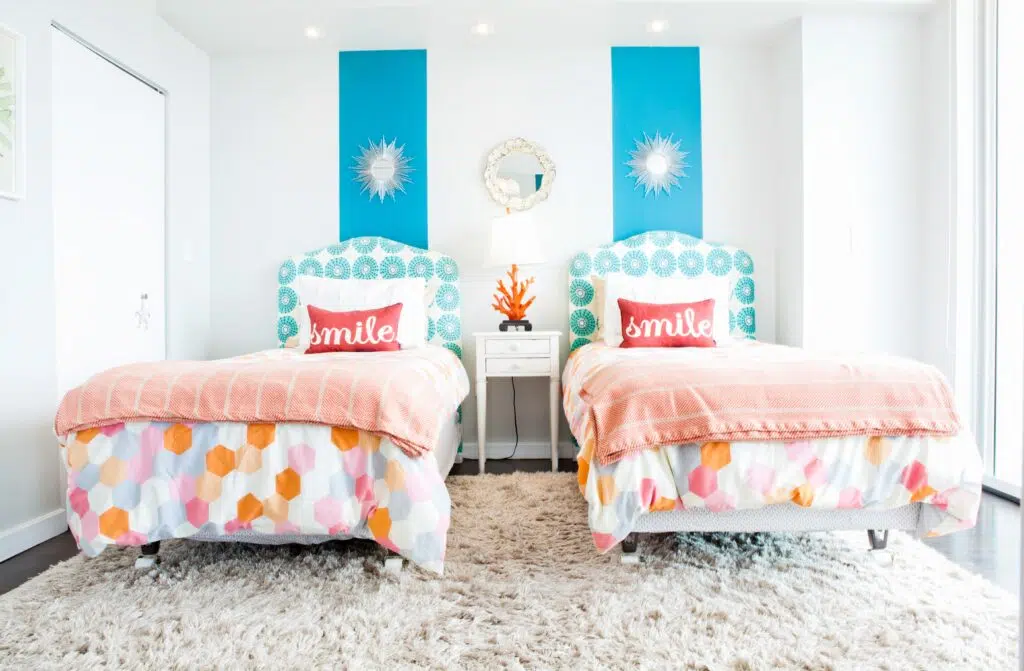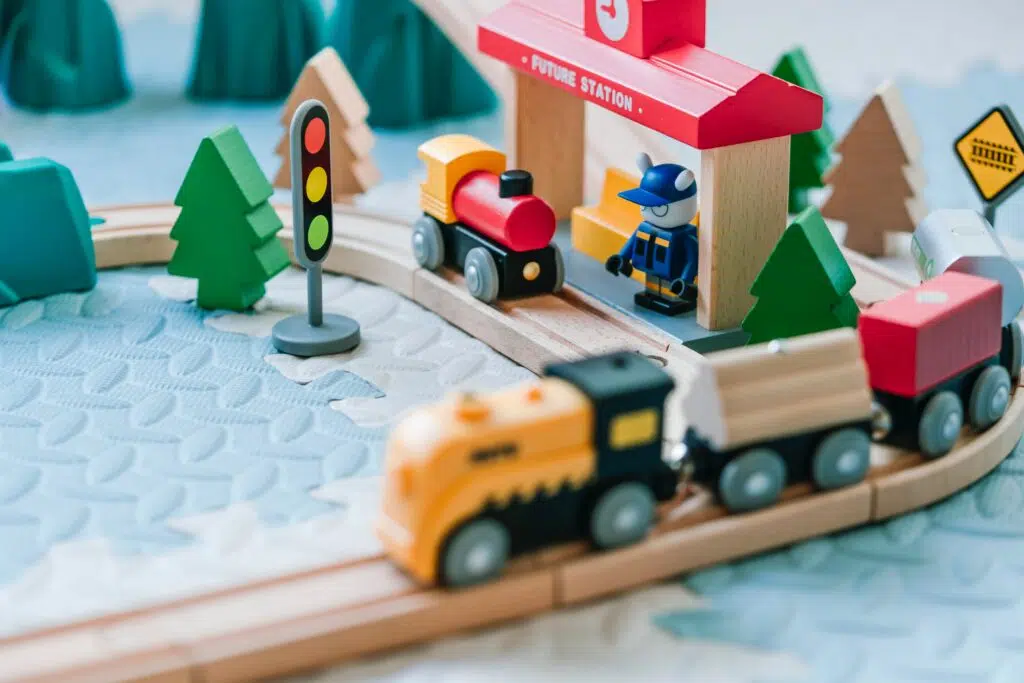When it comes to organizing advice, it seems like kid’s bedrooms tend to get overlooked. There’s tons of information about maintaining adult bedrooms and children’s playrooms, but what about the vitally important space where your child goes to rest and reset?
In our opinion, a serene bedroom is critical to a child’s well-being. We hope the following tips will help you create a calm and restful space for your kids!
Less Is More
Just like adults, kids can get stressed out by a cluttered area. If your child’s room is full of toys, piles of clothing and stacks of books, they may have a hard time winding down from a long day. It’s essential that when they close their eyes for nap time or for a good night’s sleep, they don’t have visions of clutter in their heads.
No matter what size the room is that you’re dealing with, less is more. You may have a bookshelf that can hold dozens and dozens of books but that can be incredibly overwhelming to a child. Choose their current favorites and make those accessible to them, but put away the ones that they’re not interested in. These can go into a box or a bin and be pulled out when they need something new to look at. Minimizing visual clutter is the first step to creating a sanctuary.
This theory holds true for everything that lives in your child’s bedroom. Let’s start with clothes…
Clothing
In today’s society, fast fashion is a thing not only for you, but for your kids. It’s so easy to walk into a store and see adorable clothing at great prices. Who can resist the tiny dresses you can throw in your cart for a song or the darling dinosaur pajamas that are half off? It’s remarkable how quickly mountains of clothing can accumulate! Unintentional purchasing, gifts, and hand me downs can equal more clothes than your child could wear in a lifetime!
This may seem like a harmless habit, it’s not costing you a ton, right? But there’s more to consider than finances. What’s it costing you and your child from a mental health standpoint? Are you always picking up clothes from the floor? Are you constantly doing laundry? Does your child have meltdowns about what they’re going to wear that day? An overabundance of clothes can create chaos for everyone in your family.
And, as always, there’s the environmental impact to consider. The resources it takes to create all of these inexpensive garments is astronomical combined with the additional resources it takes to get rid of them when they’re worn out or we simply no longer want them.
So what’s a parent to do?
Categorize, Edit, Relocate
If your child is too young to make decisions, find an hour or two when you can pull all of their clothing out. Sort everything into categories; onesies, pajamas, pants, tops etc. Then subcategorize either by size and/or type. For example, you may have short sleeve tops (2T) and long sleeve tops (2T) and then those two categories in 3Ts. Knowing exactly what you have and at what size will help you to determine what to keep.
Get rid of anything that is stained or torn and cannot be donated or kept for hand me downs. As much as it may ease your conscience by putting something in the donate pile rather than the trash, know that no one wants a stained onesie any more than you do.
Really contemplate how much clothing your young one needs. Admittedly, small children need more clothing than the rest of us because of accidents of every sort. But drawers and closets have their limits, so only keep what you actually have room for. Stacking clothes in every available nook and cranny is only going to make your life harder in the long run.
Once you have your categories sorted, decide what is staying, what is being donated and what is trash. You should be left with items that your child is currently wearing – size wise and seasonally – in their closet or dresser. Anything that is too big or out of season should be put into labeled bins (be specific, for example, 3T Winter Pants and Sweaters) so you know exactly what you have before you go out and buy more. We recommend bins with locking tops so that everything will be safe from dust, humidity and critters.
Note: You may have to include older children in this process and that can be a bit more difficult, but if they’re old enough to have an opinion, it’s a necessary step. By pulling everything out and making categories, your son or daughter will be able to choose their favorites and let go of the things they don’t want. You may not agree with all of their choices, but we urge you to respect their wishes, it will make the process easier on everyone!
Toys
If you’re fortunate enough to have a playroom for your children’s toys, this may not be a huge issue for you (although, in our experience, toys tend to migrate!). But if you don’t have a separate area, kid’s rooms can quickly fill up with every sort of car, stuffed animal, book and game. This may be ok during the day, but when it comes to sleeping, all of these things can be overstimulating for your child.
Like clothing, toys tend to accumulate magically without any effort on our part, or so it would seem! But if you go through the same strategy of making categories and then subcategories, you’ll likely realize that your child has way more than they need.
And the truth is, kids actually do better with fewer choices. You don’t have to feel bad if you put up toys that aren’t current favorites or if you let go of toys that they’ve outgrown or never played with. If your child is in a Dino phase, save the dolls for another time.
Our best advice for toy organization is to invest in some cute bins. You can minimize clutter, both physical and visual, by putting things away where your child won’t be overwhelmed by the sheer number of items.
Miscellaneous
Unfortunately, kids bedrooms are not exempt from random items. Backpacks, pet toys, extra blankets and bedding, dishes…oh the things we’ve seen pop up in kid’s rooms! But it’s imperative that you maintain order to create good sleeping habits. By removing anything that absolutely doesn’t belong, or can even just be placed in a better area, your child’s room will be the place they go to recharge from the world. By establishing boundaries and creating systems in which the bedroom can be quickly and easily tidied and returned to order, your child will always have a place that is reassuring and will allow them to relax.
We know that organizing with children can be difficult! If you need more guidance, our Love Your Home Again course is a fantastic resource to help you organize every area of your home, even those that belong to your rugrats😉





















